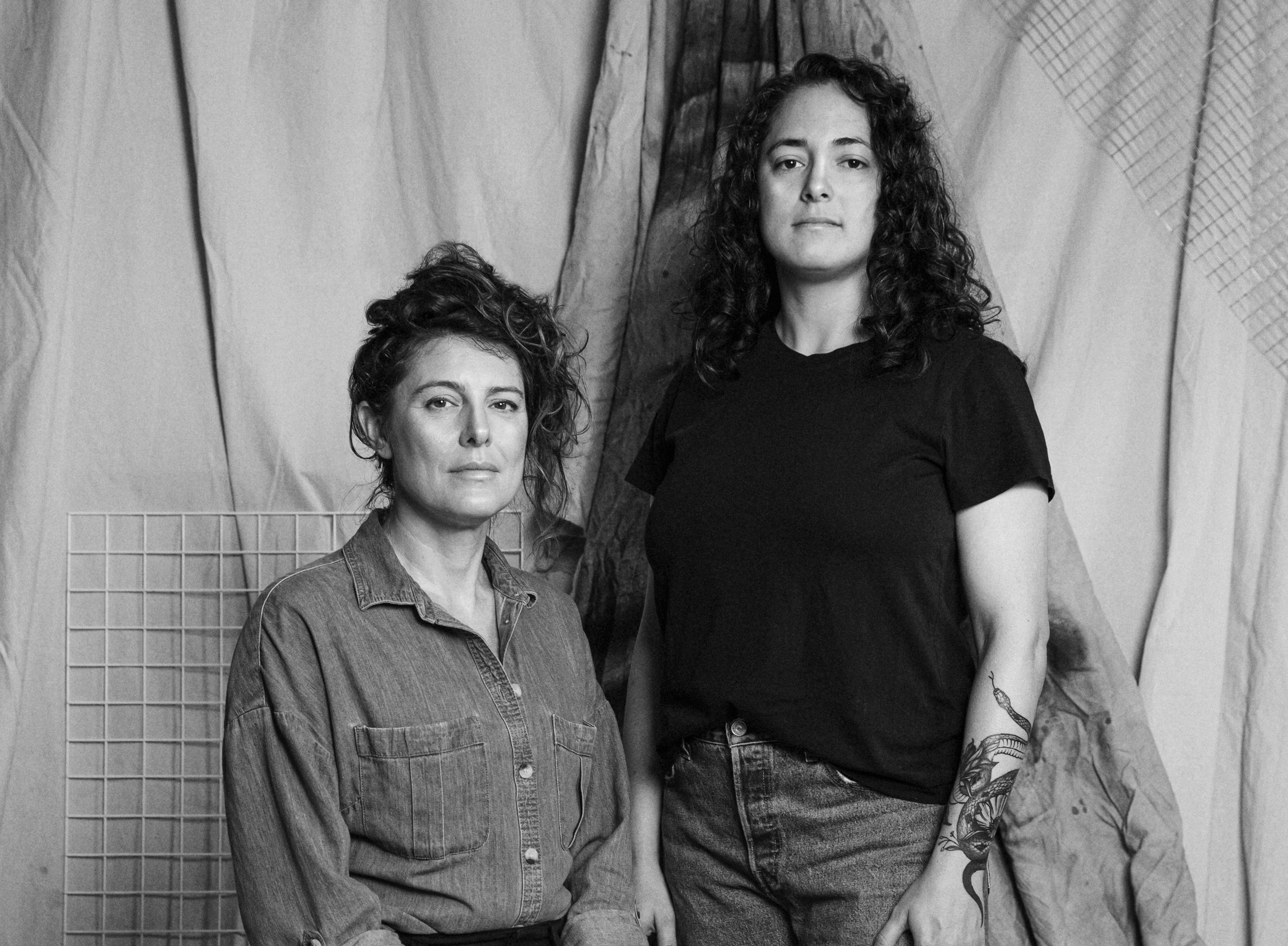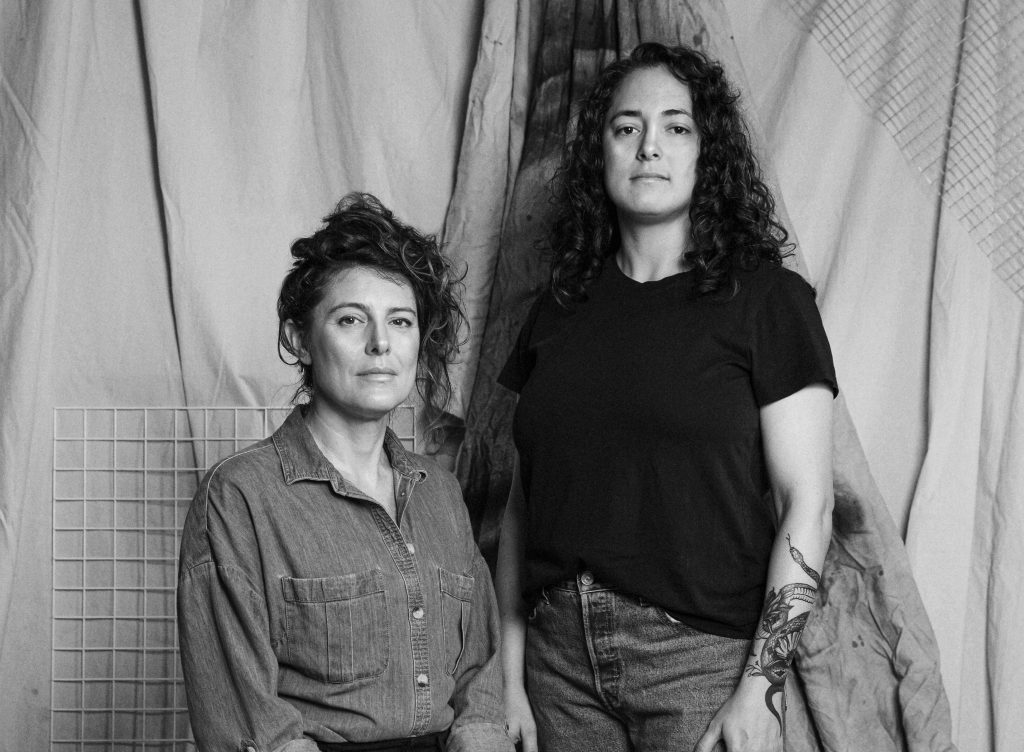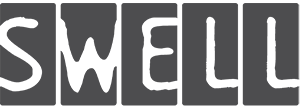
CHELSEA JEWELL AND LLAMA

Llama and Chelsea are emerging artists practicing on Kombumerri Country. Through collaboration, Chelsea’s delicate armatures and research-based process is brought into dialogue with Llama’s intimately detailed textile works. Together these distinct practices reveal a novel layering of scale, medium, and approach to storytelling. Since migrating from New York in 2018, Llama has nurtured a textile practice that explores materiality and place through intuitive making. Celebrating complexity in the natural world, Llama brings exquisite attention to pattern and texture in her embroidery works, playfully experimenting with translucency and embellishment. Chelsea leverages her architectural background to contemplate line as mediator, object, and surface. Her sculptures exist as porous drawings, wavering with gestural irregularity, colour, and shadow. Essential to her practice is crafting spatial territories that bring form to what is unseen, mapping relationships between body, time, and place.
Haven
Haven explores the delight and fragility of Currumbin’s intertidal zone, documenting the stories of tropical marine migrants that have arrived and will continue to arrive on Gold Coast shores as oceans warm. Through the hopeful lens of adaptation, the installation maps a speculative marine landscape, charting an imagined shoreline with wavering armatures that serve as delicate portals to intricately embroidered sites of habitation. Shifts in ocean temperature and sea level will undoubtedly have a profound effect on life in and out of the sea. Where will climate refugees find safe harbour?
Can you describe your creative process from concept to completion?
The creative process for Haven started with out decision to collaborate and think of ways we could bring our practices together. Individually our practices often centre on place and nature so we started with the beach at Currumbin. What is here? What is changing? What impact do those changes have? With that research we found information and data that is used by governments to manage change like predicted sea levels, citizen science projects that document out of range species and reports about intertidal zones and how they might change in the future.We thought about ways to retain the delicate nature of our work and how colour, light and scale would help to tell the story of climate driven marine species migration in a way that is hopeful, inspires delight at a range of scales and is fun to move through, past and around. During the next phase of the project we test prototypes and made maquettes to ensure the scale and detail of the work was suitable for the site. During our material investigations we considered colour, types of paint, how to reuse and re exhibit parts of the work in an effort to make our choices orient towards sustainable art making. Reuse of components and working hard to reduce the plastics in the work was important to us.The final phase of the project is fabrication and because of the scale of the work we decided to invite interested people to help us make certain elements of the work. We have used the Miami One Studio Residency to host making circles, as a place to create and display the work as we make it in an effort engage the public off site in the work and the festival at large.
Where do you look for inspiration? What themes do you find most interesting?
We look for inspiration in place, nature and science. Bringing our practices together has created a interesting intersection of these ideas and the sculpture is a way of telling a story about this place and what the near future holds for new arrivals and exisiting ecological communities. We are interested in finding positive and curious ways of telling stories that are often worrying or frightening. We are interested in engaging the audience using wonder and delight- making it safe to consider the larger themes in the work like climate-driven displacement.
What role does location or environment play in your sculptures?
Haven is a work that is deeply connected to the environment and changes that are happening now and changes predicted in the future. The work documents a sea level rise and the new species that have begun to the populate cooler water. The orientation of the sculpture is specific to the location and articulates a macro scale of species migration to the waters of SEQ while the grid arrangements and module heights, colours and textures embed data relating to acidification, human impacts, temperature and a projected sea surface.
How do you feel when you see people interacting with your sculptures?
We feel great when people are interacting with our work!! It feels to us like a shared connection through delight and wonder-it’s such a rewarding and important aspect of the work.
Describe your dream project.
To create works that are sensitive, co-created with interested groups, projects that work at many scales and have social engagement at their heart.Also we would love to create work in festivals.
Website chelseajewell.com.au
Instagram @chelsea__jewell @llamaisthename
Come and see for yourself at SWELL Sculpture Festival, Pacific Parade, Currumbin 6th – 15th September.
